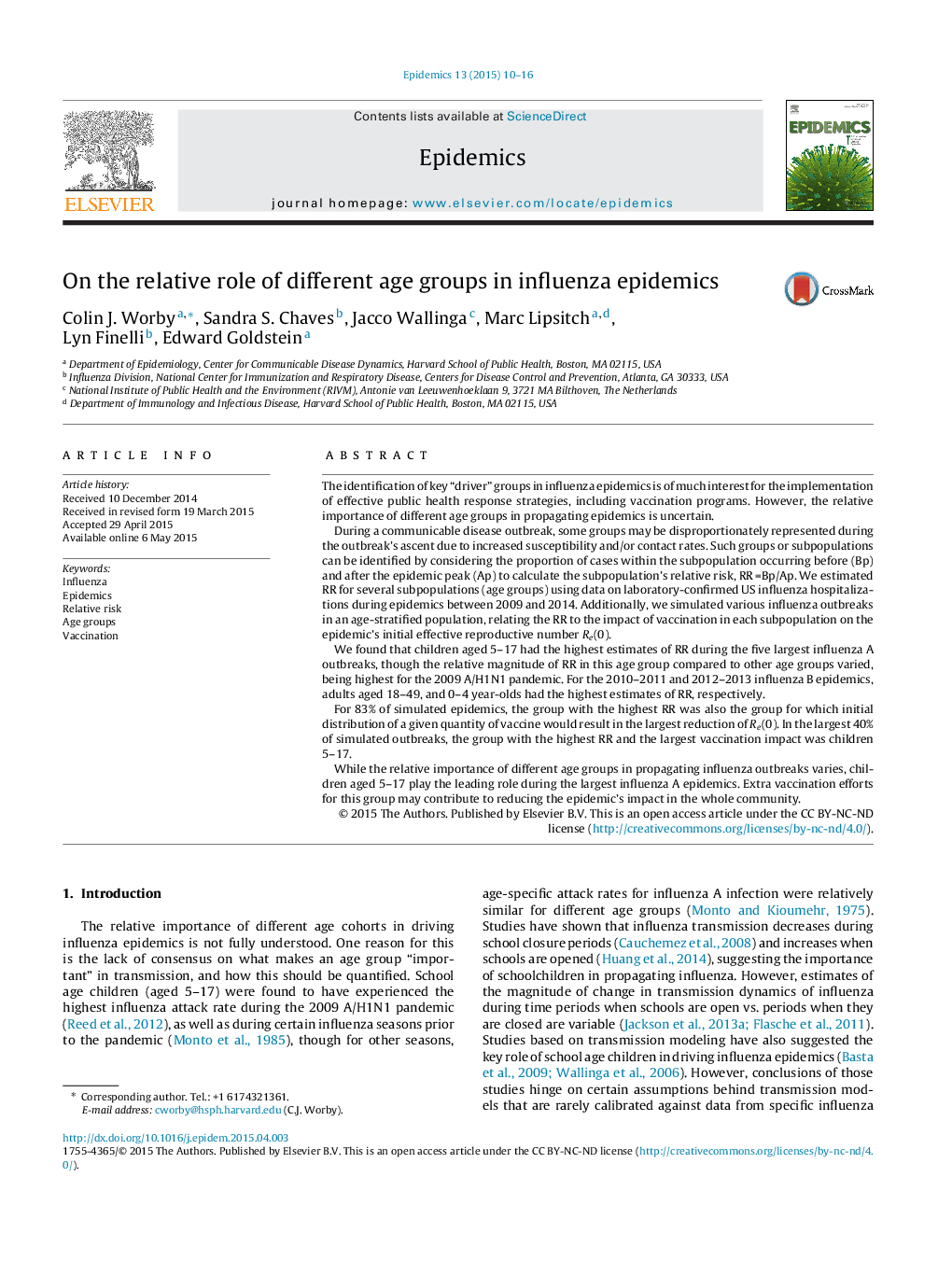| کد مقاله | کد نشریه | سال انتشار | مقاله انگلیسی | نسخه تمام متن |
|---|---|---|---|---|
| 2813540 | 1569434 | 2015 | 7 صفحه PDF | دانلود رایگان |
• Epidemics are often ‘driven’ by subgroups with higher contact/transmission rates.
• We propose a simple statistic to identify such groups using surveillance data.
• Vaccine distribution to such ‘driver’ groups usually the most effective strategy.
• Children aged 5–17 played most important role in largest influenza A outbreaks.
The identification of key “driver” groups in influenza epidemics is of much interest for the implementation of effective public health response strategies, including vaccination programs. However, the relative importance of different age groups in propagating epidemics is uncertain.During a communicable disease outbreak, some groups may be disproportionately represented during the outbreak's ascent due to increased susceptibility and/or contact rates. Such groups or subpopulations can be identified by considering the proportion of cases within the subpopulation occurring before (Bp) and after the epidemic peak (Ap) to calculate the subpopulation's relative risk, RR =Bp/Ap. We estimated RR for several subpopulations (age groups) using data on laboratory-confirmed US influenza hospitalizations during epidemics between 2009 and 2014. Additionally, we simulated various influenza outbreaks in an age-stratified population, relating the RR to the impact of vaccination in each subpopulation on the epidemic's initial effective reproductive number Re(0).We found that children aged 5–17 had the highest estimates of RR during the five largest influenza A outbreaks, though the relative magnitude of RR in this age group compared to other age groups varied, being highest for the 2009 A/H1N1 pandemic. For the 2010–2011 and 2012–2013 influenza B epidemics, adults aged 18–49, and 0–4 year-olds had the highest estimates of RR, respectively.For 83% of simulated epidemics, the group with the highest RR was also the group for which initial distribution of a given quantity of vaccine would result in the largest reduction of Re(0). In the largest 40% of simulated outbreaks, the group with the highest RR and the largest vaccination impact was children 5–17.While the relative importance of different age groups in propagating influenza outbreaks varies, children aged 5–17 play the leading role during the largest influenza A epidemics. Extra vaccination efforts for this group may contribute to reducing the epidemic's impact in the whole community.
Journal: Epidemics - Volume 13, December 2015, Pages 10–16
